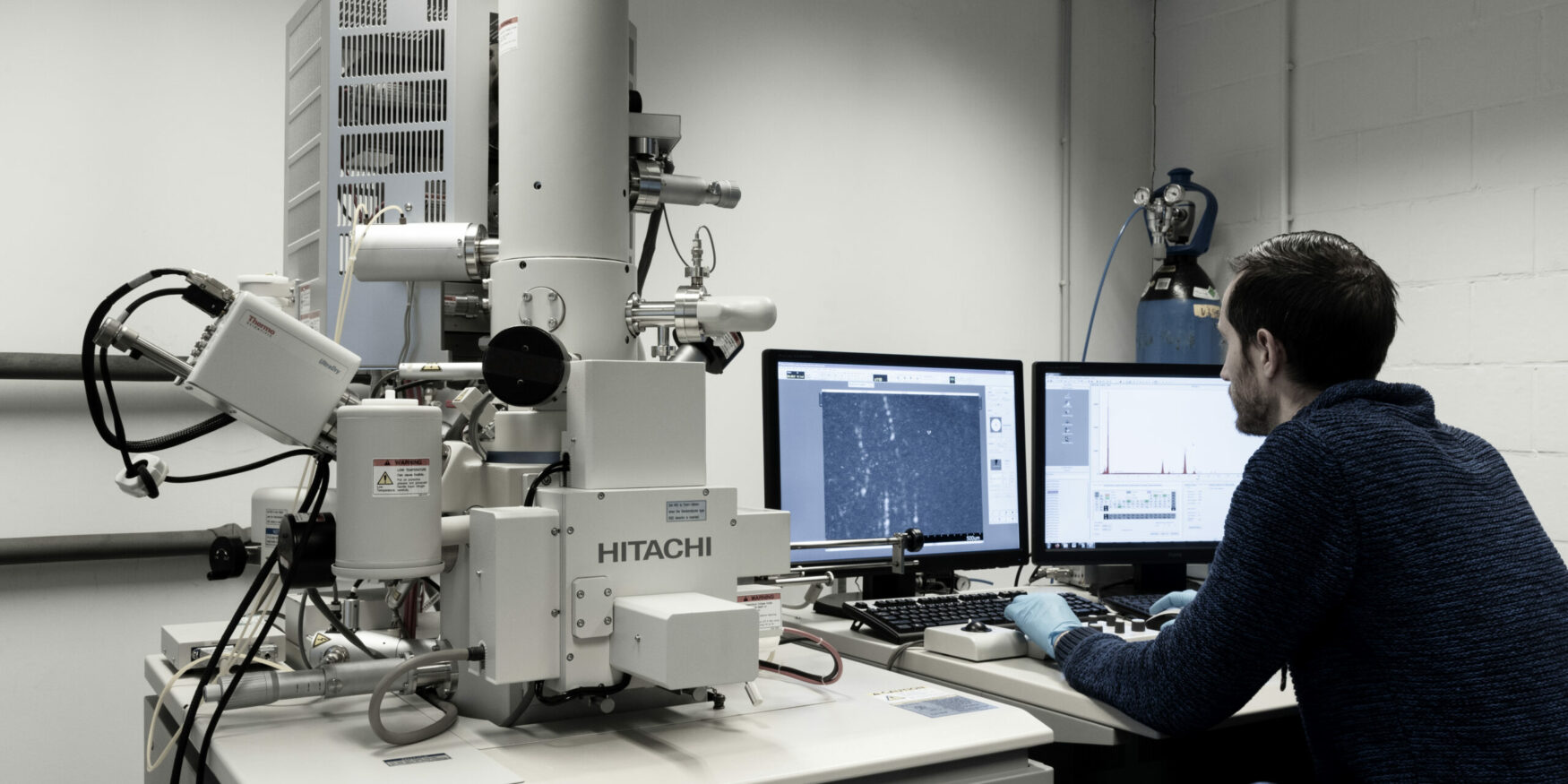Physical-chemical analyses
Definition/objectives:
Physical-chemical analyses are used to determine or verify the chemical composition of materials, to identify defects or to evaluate their performance.
Materia Nova has a wide range of analytical techniques depending on the nature of the elements being tested, the materials (metal, polymer, ceramic, etc.) and the shape/size of the samples (bulk, surface, interface: thin films).
Performance measurement (standards and equipment tests)
- Chemical composition analysis
- Identification of impurities (particles, surface pollution, residual solvents,...)
- Characterization of layers or surface treatments
- Identification of (nano)particles
- Thermal analysis
- Study of failures: deposits, breakage, cracks, corrosion, adhesion problems
Depending on the problems encountered, different analysis techniques can be used:
- SEM-EDX (Scanning Electron Microscopy with Energy Dispersive X-ray detector),
- Chemical analysis XPS (X-ray induced photoelectron spectrometry) and ToF-SIMS (Time of Flight Secondary Ion Mass Spectrometry),
- ICP (Inductively Coupled Plasma)
- XRD (X-ray Diffraction)
- Infrared spectrometry (FTIR), RAMAN, UV/Vis
- Surface energy measurement (contact angle)
- Analysis by DSC (Differential Scanning Calorimetry), DMA (Dynamic Mechanical Analysis), Viscosimetry
Our strengths
- Our wide range of equipment offers a complete analysis of your materials. With our experts in the field of materials, we support industrialists in the identification of the nature and origin of a defect in order to set up corrective and preventive actions.

